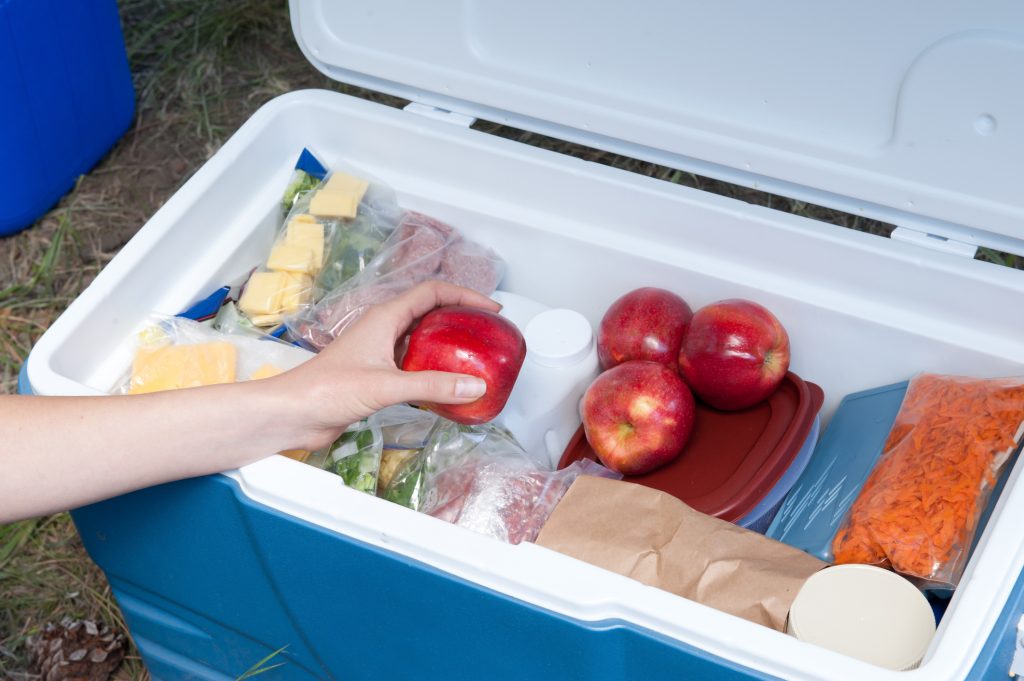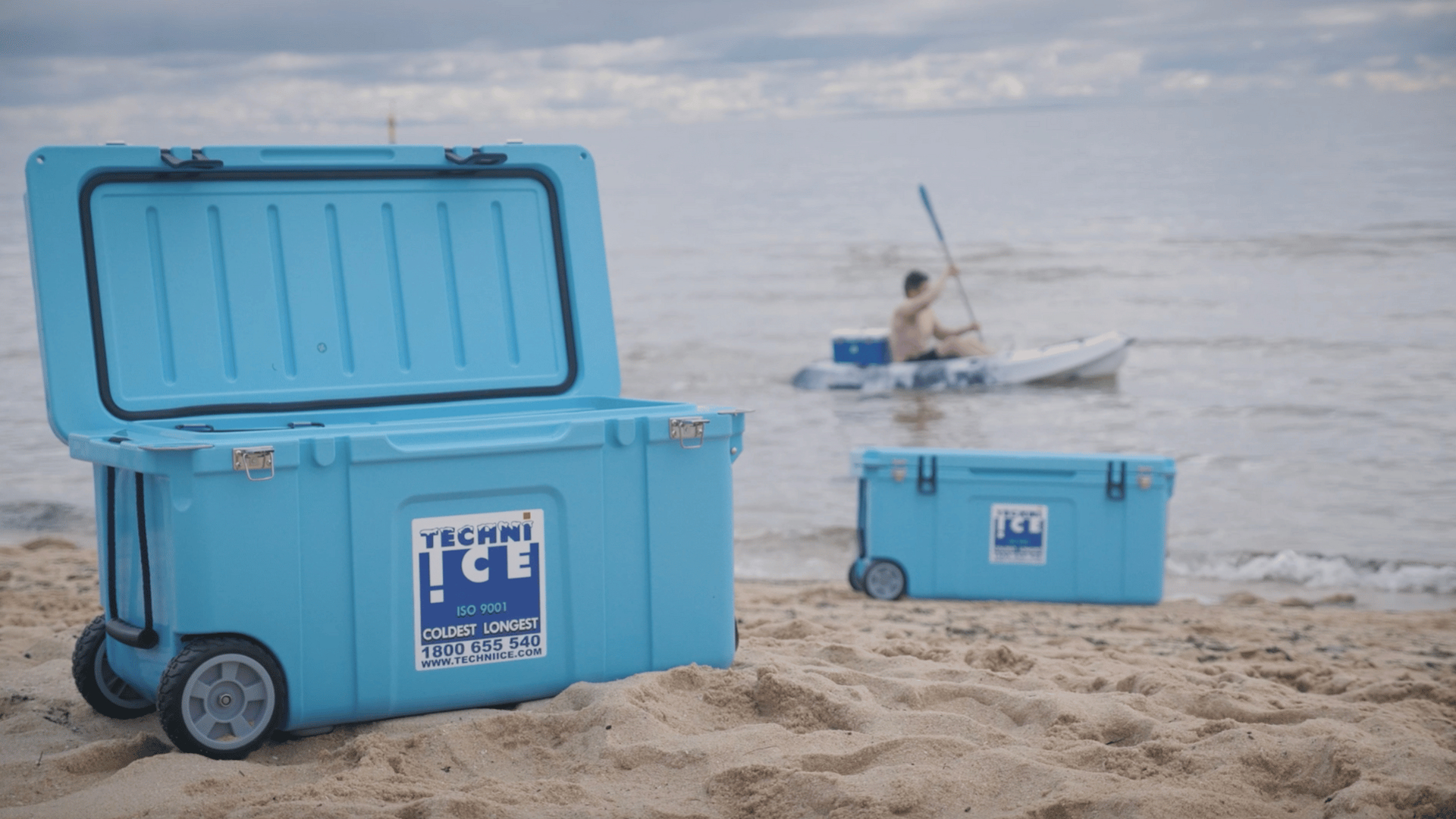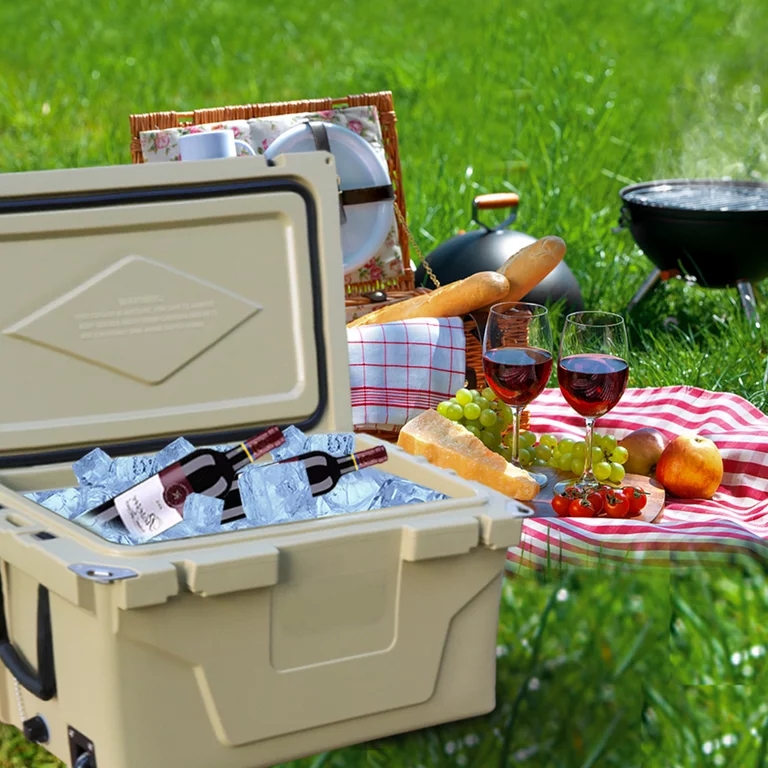If you think that ice boxes were invented in recent years, you’re wrong. They were created for the first time in 1840. As soon as people started going on picnics, they tried to find a way to keep their drinks and food cold. So, the ice box was born. Nowadays, almost every household in Australia has at least one for their outdoor activities.
Types of Ice Boxes
Polyethylene Ice Boxes

The major difference between these boxes is the materials they’re made of. They can make a big difference to the performance, cooling time and life of the box. So, consider the options carefully. Polyethylene is a material that you’ll encounter very often. It’s very popular because it works well with both big 150l boxes and smaller 15l ones. It’s strong, durable and can stand up to a lot of wear and tear.
To prevent the contents inside from getting warm, these boxes have an insulation layer under the outer coating. In order to make them, manufacturers work with a method known as the roto-moulded method. Instead of glueing or moulding several pieces together, they use a single large piece of polyethylene.
This leaves no room for joints and gaps that are potential spots where the box can get damaged, crack or even separate. It also allows for low heat absorption, which is crucial, especially in classic and timeless white ice boxes. By doing this, manufacturers create boxes that can keep the contents cool for up to 10 days.
Fibreglass Ice Boxes

Fibreglass is the material that makes both the inside and the outside of the box. Just like with polyethylene, there’s an insulation layer underneath to keep the contents cool for longer. Just make sure you take good care of these boxes because fibreglass is a bit more fragile and if you hit or bump it a bit harder, it may get damaged.
It’s also heavier than any other plastic. But the great thing is that it’s non-porous. This means even if you spill some smelly food or drink, you won’t feel it once you clean the box. A lot of people find it ideal for fishing trips where you need to keep the catch fresh and cool for an extended period of time.
It’s also suitable for camping because you can take more meat with you and not worry that it’ll go bad. Fibreglass boxes can keep the contents cool for up to 7 days if they’re working under optimal conditions. One downside of these boxes is their price. They’re on the pricier side.
Ice Boxes Depending on the EHU.
You can find several types of ice boxes depending on their EHU (electrical hook-up) needs. If they don’t need one, they’re considered passive boxes. These are perfect for camping or picnics because they’re portable. But to keep the inside cold, you’ll need to use ice blocks or regular ice, and this can get messy very fast.
Thermoelectric boxes aren’t particularly energy efficient and require EHU. They could drain the vehicle’s battery, so avoid leaving them attached for a longer period of time. If you choose a compressor box, you’ll need an EHU which can be a leisure or a car battery. You can also go for absorption cool boxes that run on electricity or gas.
What to Consider When Buying
Size
Ice boxes are very versatile when it comes to their size. They can vary from small 12l ones to industrial 150l boxes that have a huge cooling capacity. You should choose according to your needs. If you’re going camping, how many people are coming, how much food and drinks you’ll need, how long are you staying, how often will you use the box?
Answering these questions will help you make a size decision. Bigger is not always better in this case. If you don’t need a 100l box don’t buy it. Get a 30l one that will satisfy your needs. If you can, buy different-sized boxes and you’ll have a choice for every occasion.
Colour
You may think that colour is purely aesthetic and has nothing to do with the performance, but you’re wrong. Colour can have a big impact on the box’s performance. Manufacturers mainly focus on bright colours such as white, blue, yellow and green. This is because white ice boxes can increase the performance by 20% by not attracting heat. Dark hues like brown or black will attract heat and cause the inside to heat up.
Insulation
There should be insulation within every ice box. This raises the system’s thermal efficiency. The most common insulator is foam, and it keeps the inside of the box cool for longer. The foam’s thickness is important. The thicker the foam the better the insulation and vice versa.
Latches
Every box needs to have a tight seal and the latches are responsible for it. Make sure they’re strong and secure before buying the white ice box. There are loose latches if the lid jiggles, which results in a less efficient box. If you can, find a box whose latches are recessed into the design. This looks prettier and it’s more convenient.
Plus, you can fit it in tight spaces and the latches won’t get caught on fabrics and bump into objects. What matters most, though, is the force with which they close the lid. One important thing to remember is to not leave them closed when you don’t use the box. Loosen them up. Otherwise, they may loosen up quicker and be useless the next time you need the ice box.
Get the Best of It While Camping

We all want our food and drinks to keep cool as long as possible when we go camping. If you’re using a box that doesn’t need EHU you can make your own ice blocks. Take several 1l and 2l bottles, fill them with water (but leave a bit of space for expansion) and freeze them before the trip. This will keep the contents cool for longer.
It can also be very effective if you chill the whole ice box beforehand. Pre-chill the food and drinks as well. Freezing the drinks is optional, but if you’re planning on bringing meat, and you won’t eat it in the next 2 days, freeze it. Close as many gaps inside the box, don’t allow for a lot of space between the contents. This way they’ll keep cool for longer. And last but not least, keep the ice box away from the sun.
